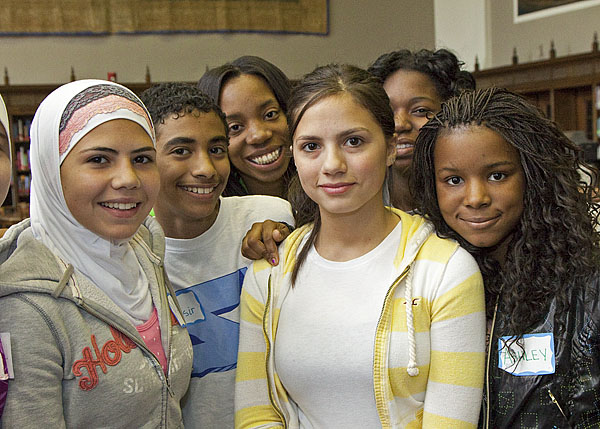At a time when the nation’s schools are becoming more segregated, teachers and students across the country have an opportunity to show the rest of the world they’re committed to challenging these boundaries by registering for Teaching Tolerance’s Mix It Up at Lunch Day.
The Oct. 30 event, sponsored by the Southern Poverty Law Center’s Teaching Tolerance project, encourages students across the nation to challenge and cross social and racial boundaries by sitting with someone new in the cafeteria for just one day. More than 1 million students across the nation took part in Mix It Up last year.
Schools participating in this year’s event can register here. The map shows the location of all registered schools taking part in this year’s activities. The Teaching Tolerance website – tolerance.org – also offers free online resources to help school groups and classroom teachers explore the issue of social boundaries and plan their events.

“Mix It Up is a positive step that schools can take to help create learning environments where students see each other as individuals and not just as members of a separate group,” said Teaching Tolerance Director Maureen Costello. “When people step out of their cliques and get to know someone, they realize just how much they have in common.”
Cafeterias are the focus of Mix It Up because that’s where a school’s social boundaries are most obvious. Breaking down these barriers can be an important step for students who don’t have many opportunities in school to interact with someone unlike them. According to U.S. Census and school data:
- The average white student goes to a school that is more than three-quarters white.
- One in four children in poverty attends schools with few middle- and upper-middle class schoolmates.
- One-third of black and Latino students attend schools with 90 to 100 percent minority populations. In the Northeast, over half of black students are in majority black schools.
Research suggests that schools with policies that deliberately increase racial integration and mix low-income and middle-class students have documented benefits.
Sociology Professor Roslyn Arlin Mickelson noted in her 2011 research brief that “students who attend racially and socioeconomically diverse schools are more likely to achieve higher test scores and better grades, to graduate from high school, and to attend and graduate from college.”
“When students experience diversity in their schools and classrooms, everyone benefits,” Costello said. “If we do not instill in today’s students an appreciation for diversity, it will be difficult for our country to succeed in the 21st Century economy where perhaps the most important job skill is the ability to collaborate with others.”
As one of the nation’s leading providers of anti-bias education resources, Teaching Tolerance reaches hundreds of thousands of educators and millions of students annually through its Teaching Tolerance magazine, multimedia teaching kits, online curricula, professional development resources and classroom-friendly social justice documentaries. These materials are provided to educators at no cost.
